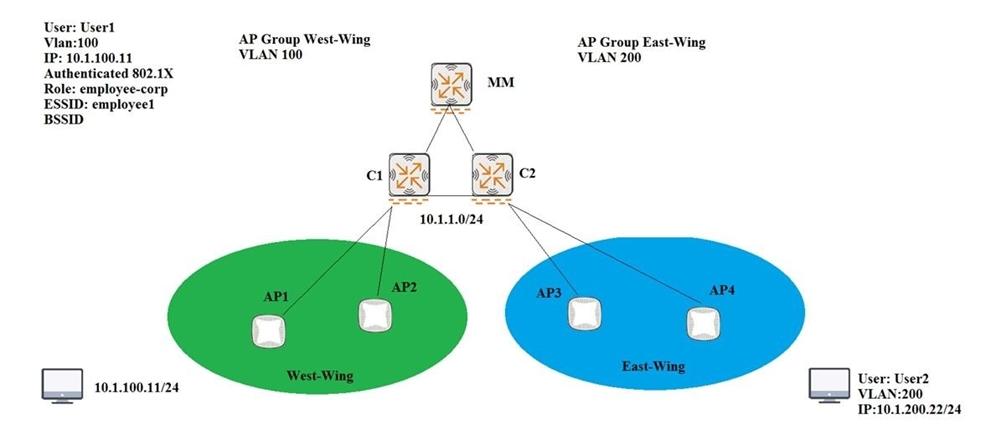Refer to the exhibit.

Two Aruba Mobility Controllers (MC) are managed by a Mobility Master (MM) in a non-cluster deployment as shown in the exhibit.
• The C1 controller is connected to AP1 and AP2.
• The C2 controller is connected to AP3 and AP4.
• VLAN mobility is enabled in the VAPs of both AP Groups.
• Both C1 and C2 support the same VLANs.
• User1’s wireless device supports BSS Fast Transitioning and is currently connected to AP1.
What happens if User1 roams across the network and the user’s device associates to AP3?
A. User1’s traffic is terminated on the C2 controller, and they will have to re-authenticate and re-obtain a new IP address.
B. User1’s traffic is terminated on the C2 controller, and they will not have to re-authenticate but will need to obtain a new IP address.
C. User1’s traffic is terminated on the C2 controller, and they will have to re-authenticate and can keep their original IP address.
D. User1’s traffic is tunneled to the C1 controller, where they will not have to re-authenticate and can keep their original IP address.


C
I bet D is OK.
This is case for L2-mobility as both C1 and C2 support the same VLANs.
1. Non-cluster deployment means WLAN clients NOT remain anchored to a single controller.
Client’s L2/L3 information and sessions will renew.
2. BSS Fast Transitioning excludes re-authenticate.
So I think answer is B.
Sori Lalala I try Answer B and then, B is Wrong bro.